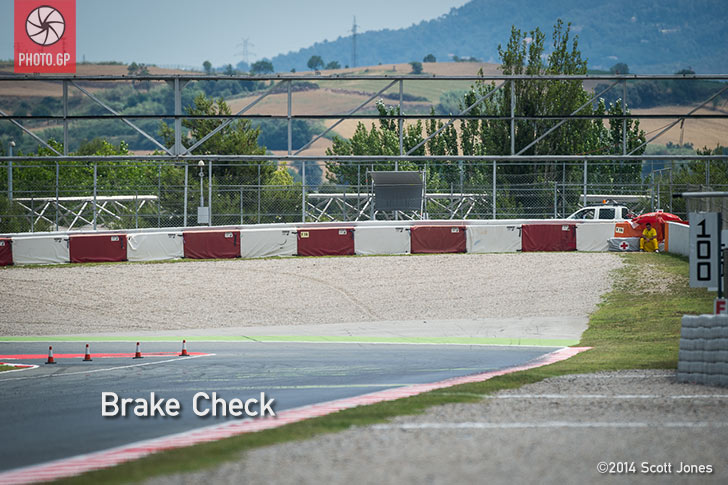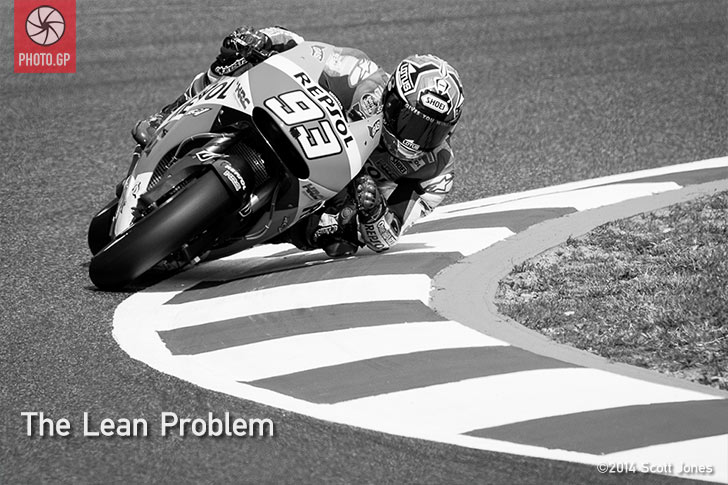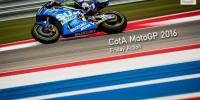MotoGP Wheel Size: Can it Save Us All?
One possible solution is to build eighteen new race tracks around the world, each with vast run off areas. We’d have to say goodbye to such hallowed grounds as Phillip Island, Mugello (don’t get me started on that concrete wall that lies meters away from the fastest speeds in MotoGP), Catalunya, Assen, (insert your own favorite track on the current calendar). Fans would be farther away from the action than ever, as would photographers! But if that’s the price we have to pay for greater safety, we’ll just have to lump it and do the best we can.
Another possibility is to get some major earth moving equipment and look for large amounts of nonexistent money to finance expansion of current run off areas. This would involve radically changing many of our current tracks, moving not only soil but ‘permanent’ structures such as homes and roads on the exterior of certain circuits.
This would also often force dramatic layout changes in cases where turns on interior sections of tracks would need outer sections to be moved to make way for more run off. In some spaces it would be impossible. Catalunya’s iconic La Caixa turn is an example. If there is currently too little run off here, too bad, because on the other side of the concrete wall is a narrow service road, then a cliff that overlooks the final turn. I doubt even Formula one would consider moving that much soil.

But F1 takes a short cut here at Catalunya, turning left in front of the big red La Caixa turn. At the Monday test after MotoGP Round 7, we saw in the morning a unique situation. Cones directed the riders to use the Formula 1 shortcut, sending them around the interior of La Caixa instead of around the exterior of that special patch of red awesomeness. (The above image shows the cones later in the day, directing the riders around the usual MotoGP path.)
MotoGP veteran commentator Dennis Noyes explained to me that this was because riders are growing increasingly concerned about the wall at the end of the straight between turns 9 and 10 (shown in the above shot behind the alternating red and white pads). Though that gravel run off area is banked, the outer limit being higher than the edge of the tarmac, would it be enough to stop a MotoGP bike that experienced complete brake failure on the entrance to Turn 10? Shortening the straight slightly and forcing the riders to prepare for a much sharper turn moves the braking point up considerably, which reduces top speed at the point where the brakes are applied. So if a brake disaster did happen, there would be more room to slow down from a lower speed than we see using the current layout.
MotoGP Wheel Size to the Rescue! Maybe.
Slowing MotoGP down is the other, and best, solution to the problem. While there are many ways to do this, a rev limit being the most often mentioned these days, changing the tire specification is a golden opportunity to drop speeds and save our beloved circuits. With Michelin’s return to MotoGP in 2016, the series is also switching from 16.5” wheels to 17” wheels. Searching for exactly what effect this will have reveals much more speculation than fact, but the most sensible comments I’ve found suggest that the larger wheel size will slightly reduce edge grip. The wheel is larger, but the tire is a bit smaller to make the size of the 17″ wheel-tire combination the same as the 16.5” combo.
Perhaps this will mean a slightly smaller contact patch and thus slightly less grip. Less grip, lower speeds, less need for extra run off area. Riders are safer on our current tracks. Fewer elbows dragging on pavement? Perhaps. Another change in riding style, perhaps a kind of reversion away from today’s 64 degree lean angle? Maybe.
It’s also possible that the wheel size change will benefit the new team entering/returning to MotoGP, teams that face the daunting task of trying to compete with Honda. Discussing the arrival of the 16.5″ wheel, Kenny Roberts Jr. said on the August 9, 2010 Soupcast, “then Michelin decides to start running the 16-five [16.5″ wheel-tire combination] and that’s what killed us, with Suzuki, because as soon as they gave us a bigger contact patch… I was already pinned, basically, anyway. But the Hondas were still basically nursing the throttle. So as soon as they got the chatter out of it, and of course Valentino is coming of age at this point, you just see the domination of this motor and it takes off.” I think what Roberts Jr. means is that the smaller wheel resulted in a slightly larger contact patch which allowed Honda to use more of the power created by its superior engine. So perhaps going back to the 17″ wheel will mean a smaller contact patch, which will mean raw power is less of an advantage, which will benefit teams not using Honda engines.
Certainly the spec ECU and software are part of the long term solution. But whatever form the entire package takes, it’s imperative to decrease speeds while increasing rider safety and at least maintaining (if not improving) the entertainment value of the racing itself. I hope we don’t see grooves in MotoGP tires the way we did in F1. But if we see a Michelin tire that allows less lean angle and requires lower corner speeds, that could be a good thing.
Photographs: ©2014 by Scott Jones / PHOTO.GP – All Rights Reserved
[mgallery keyword=”Catalunya”]










Please sign in or register to contribute a comment or question.